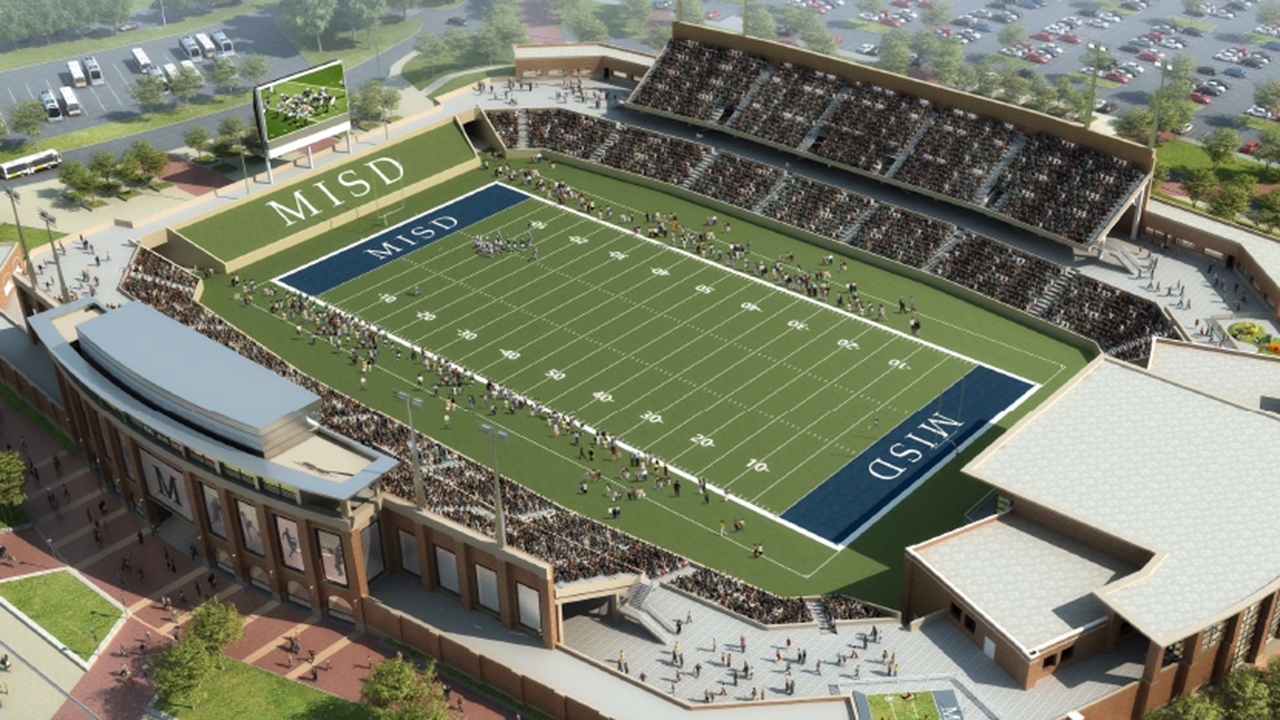The Atlantic’s CityLab blog has a fascinating series called “Wastelands,” which reports stories of “what we squander, discard, and fritter away” in our disposable contemporary culture. The latest report, however, isn’t so much about throwing things away, like, say, their photo essay on trinkets found at Dallas estate sales. It is about squandering tax dollars on enormous high school football stadiums.
It’s not the first time the national press has taken notice of what CityLab dubs North Texas’s ISD “arms race.” But CityLab’s report draws a insightful comparison between the money Texas cities spend on buildings versus classrooms, and it wonders why so much money is being spent on football stadiums when the school districts already have stadiums that they can’t even fill-up:
The money for the McKinney project came as part of a $220 million school bond referendum voters passed overwhelmingly in May 2016. Although parts of McKinney are poorer, residents’ $83,000 median household income and present relatively low tax rates make the project seemingly affordable. Here’s the rub, though: It’s not even needed. The new stadium, slated for completion for the 2017 season, will replace existing Ron Poe Stadium, which was renovated just 10 years ago at a cost of $10 million. (The district will keep the old stadium, however.) Poe can accommodate 10,000 spectators. In the 2015 football season, the most recent for which attendance figures were available, paying attendees for each of the three high schools’ home games held at Poe did not exceed 12,000 in total, and no game had even 5,000 total spectators on hand. In other words, Poe stadium was never even half full.
Why would relatively small exurban school districts like McKinney build enormous football stadiums that will sit empty most of the year (and are often less than half-full even on game day)?
The answer, in short, is anticipated population growth in the northern ‘burbs, as well as school financing system that makes it a hell of a lot easier for districts to spend money on buildings than on, well, education:
The structure of the Texas school system also seems to encourage such infrastructure spending. By law, each ISD board has the power to call referendums when they choose to raise bond money. They act and can raise funds separately from their local municipal governments. But the bond money can go only toward construction and renovation of facilities, acquisition of land, and purchase of equipment, not toward expanding education opportunities for students or paying for teachers. (Texas ranks 38th out of 50 states in per-pupil education spending; in McKinney, per-pupil expenditures totaled $7,345 in 2013, compared to a national average of $11,841, according to an Education Week analysis of federal data.)





